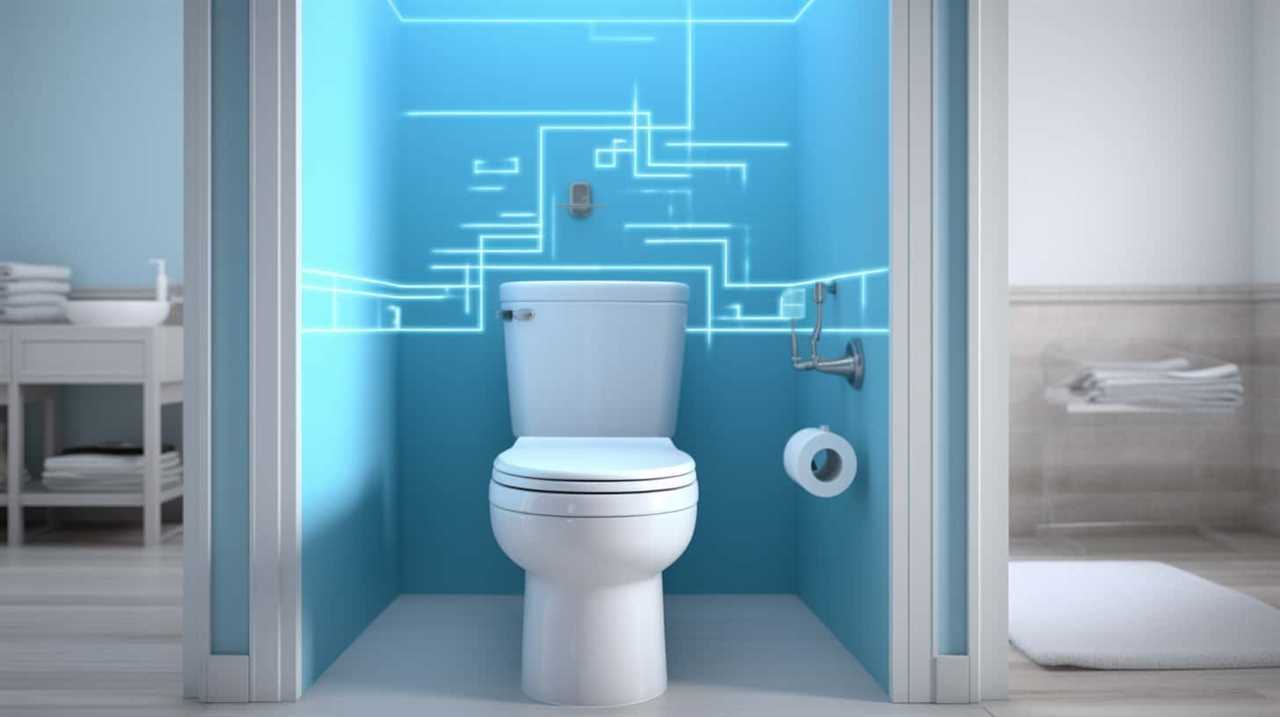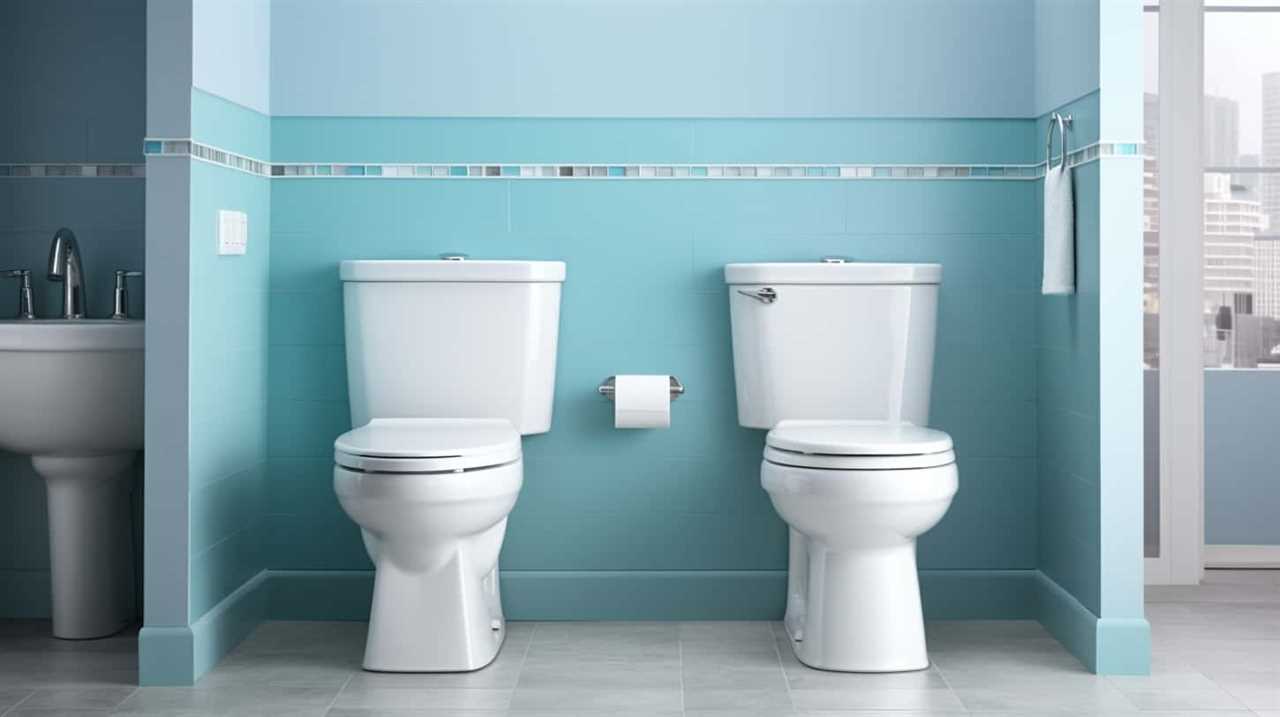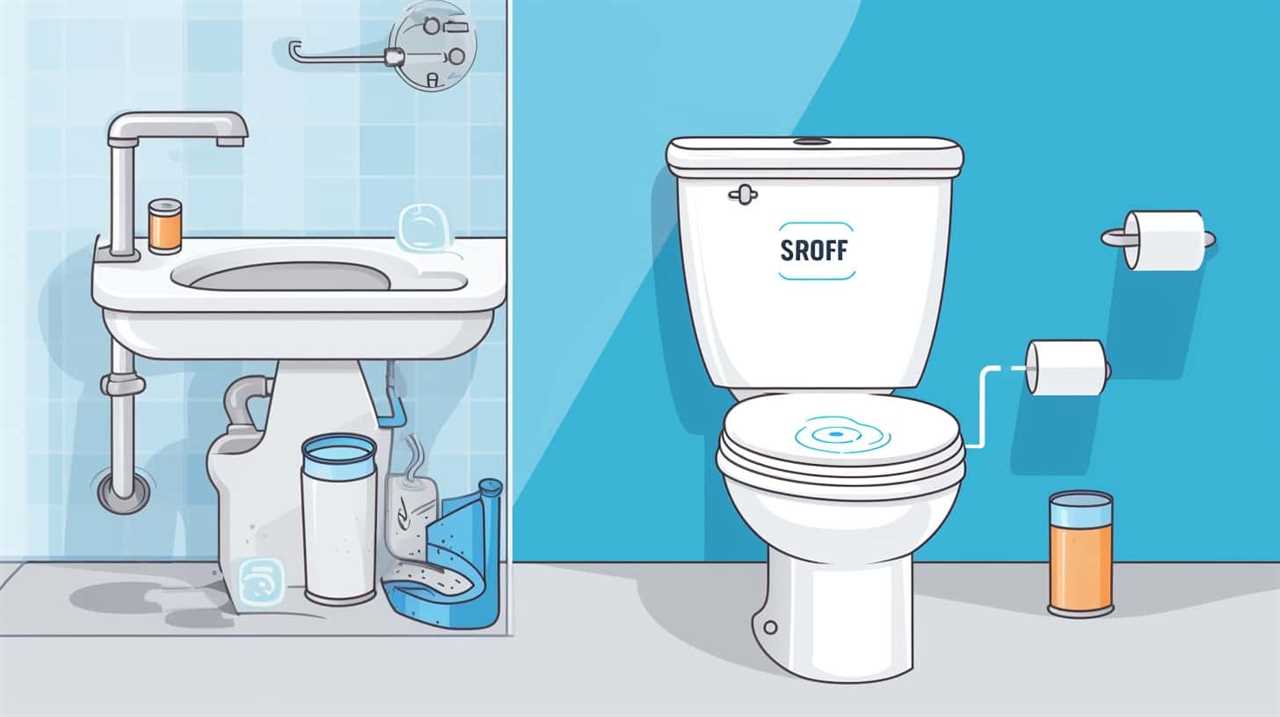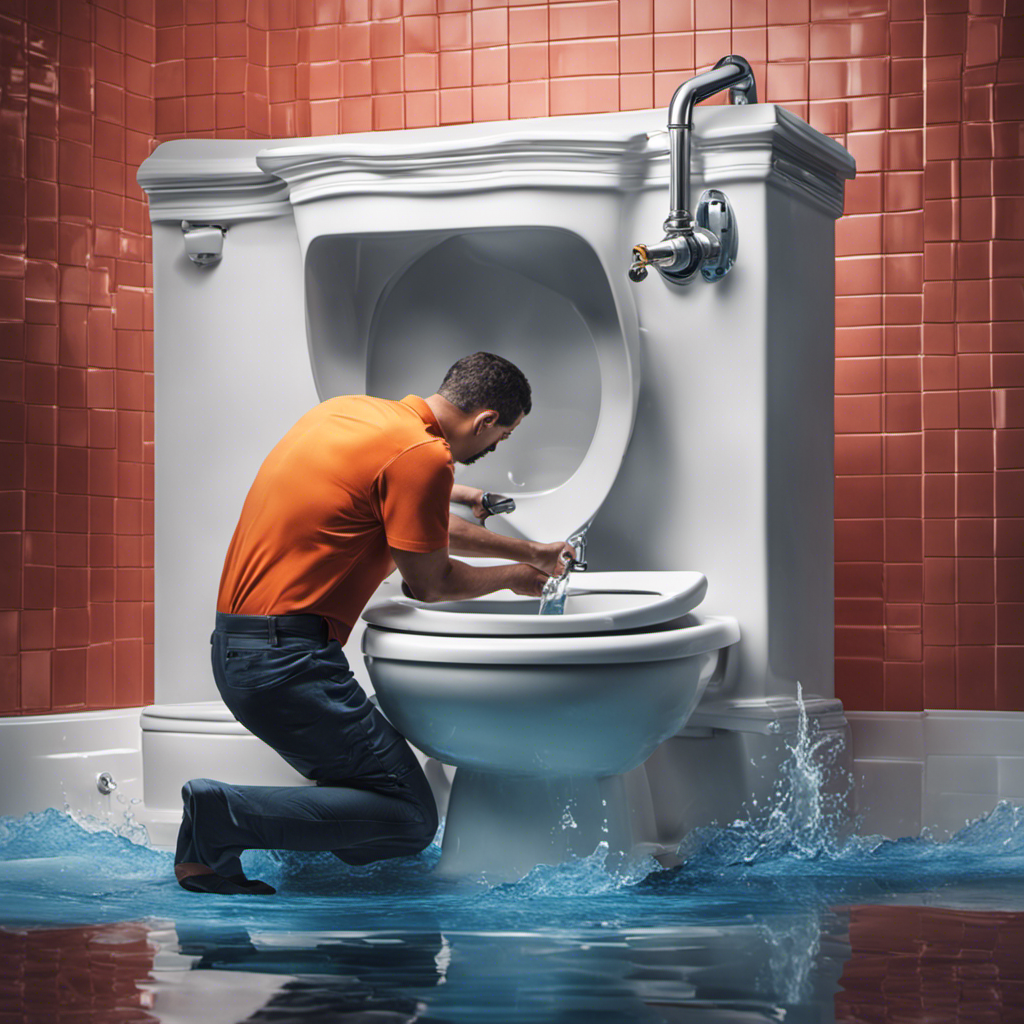We’ve all been in that situation – hovering over the toilet, questioning whether it’s safe to flush cat litter. Let’s dive right into the facts.
Flushing cat litter may seem convenient, but it can have serious consequences for our environment, plumbing, and even our health.
In this article, we’ll explore the environmental impact, potential risks, and proper disposal methods for cat litter.
So, before you reach for the flush, let’s dive into the evidence and find alternative solutions.

Key Takeaways
- Flushing cat litter disrupts wastewater treatment systems and releases harmful pollutants into the environment.
- Cat litter can cause clogs and blockages in plumbing and septic systems, leading to overflow or backup issues.
- Flushing cat litter can contaminate water sources and pose health risks to humans and marine life.
- To minimize environmental impact, choose biodegradable cat litter, compost used litter, and dispose of it in the trash using proper methods.
Environmental Impact of Flushing Cat Litter
When considering the environmental impact of flushing cat litter down the toilet, it’s important to understand the potential risks associated with this practice.
Flushing cat litter can have significant ecological consequences, especially if it isn’t properly treated in wastewater treatment plants. Cat litter contains substances like clay, silica, and organic matter, which can disrupt the delicate balance of bacteria and microorganisms in wastewater treatment systems.
This disruption can hinder the effectiveness of the treatment process and result in the release of harmful pollutants into the environment. Additionally, cat feces may contain pathogens, such as Toxoplasma gondii, that can survive wastewater treatment processes and pose a threat to marine life and human health.
Therefore, it’s crucial to dispose of cat litter in a responsible manner, such as using biodegradable litter and disposing of it in the trash.

Potential Risks to Plumbing and Septic Systems
To continue our discussion on the potential risks associated with flushing cat litter down the toilet, let’s explore the potential risks it poses to plumbing and septic systems.
Flushing cat litter can cause significant plumbing damage and septic tank issues. Cat litter is designed to clump and absorb moisture, which can lead to clogs and blockages in pipes. The clumping properties of cat litter can also cause it to accumulate in septic tanks, reducing their capacity and potentially leading to overflow or backup issues.
Additionally, cat feces may contain harmful bacteria and parasites that can contaminate the plumbing and septic systems, posing a health risk.
It’s important to avoid flushing cat litter down the toilet to prevent these potential problems and maintain the integrity of your plumbing and septic system.

Health Concerns for Humans and Marine Life
Flushing cat litter down the toilet can pose health concerns for both humans and marine life due to the potential contamination of water sources. When cat litter is flushed, it enters the wastewater system, which can lead to risks to water quality.
The litter contains various chemicals, bacteria, and parasites that can be harmful to both humans and aquatic ecosystems. These contaminants can find their way into rivers, lakes, and oceans, threatening the health of marine organisms and potentially disrupting entire aquatic ecosystems.
Additionally, the chemicals in cat litter can have negative effects on water quality, leading to the accumulation of toxins in the environment. Therefore, it’s crucial to explore alternatives to flushing cat litter to minimize the impact on both human health and the well-being of marine life.
Alternatives to Flushing Cat Litter
Instead of flushing cat litter down the toilet, we can consider using alternative disposal methods. There are several biodegradable options available on the market that are specifically designed for safe and eco-friendly disposal. These biodegradable cat litters are made from natural materials such as corn, wheat, or wood, and they break down easily in the environment.

Another alternative is composting the used cat litter. Composting is a natural process that breaks down organic matter into nutrient-rich soil. However, it’s important to note that not all cat litters are suitable for composting, as some may contain harmful substances that can contaminate the soil. Therefore, it’s crucial to choose cat litters that are labeled as compostable or safe for composting.
Proper Disposal Methods for Cat Litter
When considering proper disposal methods for cat litter, it’s important to prioritize the health and safety of both our environment and our feline companions. Here are some options for responsibly disposing of cat litter:
- Composting options: If you’re looking for an eco-friendly solution, consider composting your cat’s waste. However, it’s crucial to note that only certain types of cat litter can be safely composted, such as those made from plant-based materials.
- Biodegradable litter: Another environmentally-friendly choice is biodegradable cat litter. This type of litter is designed to break down naturally over time, reducing its impact on the environment.
- Curbside trash collection: Most cat litter should be disposed of in regular trash bags and placed in your curbside trash container. Be sure to double-bag the litter to minimize odors and prevent leakage.
- Pet waste disposal systems: Some communities offer pet waste disposal systems specifically designed for cat litter. These systems safely collect and handle the litter, preventing it from entering landfills or contaminating water sources.
Frequently Asked Questions
Can I Flush Cat Litter Made From Biodegradable Materials Down the Toilet?
We can’t flush biodegradable cat litter down the toilet. Although it may break down in water, it can still harm the environment. Flushing cat litter can introduce harmful bacteria and parasites into water sources, posing a risk to ecosystems and human health.
What Are the Potential Risks of Flushing Cat Litter Down a Septic System?
Flushing cat litter down the toilet can pose potential health risks and have a negative environmental impact. It’s important to be aware that the waste can contaminate water sources and harm aquatic life.

Is It Safe for Pregnant Women to Handle Cat Litter That Can Be Flushed Down the Toilet?
It is safe for pregnant women to handle cat litter that can be flushed down the toilet. However, it is important to practice safe handling to minimize any potential health risks.
Are There Any Eco-Friendly Alternatives to Flushing Cat Litter?
There are several eco-friendly cat litter options available, including biodegradable and compostable varieties. However, it’s important to consider the pros and cons of composting cat litter before deciding on an alternative.
How Can I Dispose of Cat Litter That Cannot Be Flushed Down the Toilet?
When it comes to disposing of cat litter that can’t be flushed down the toilet, there are several alternative disposal methods to consider. It’s important to choose methods that minimize the environmental impact.
Conclusion
In conclusion, it isn’t advisable to flush cat litter down the toilet due to its potential environmental impact, risks to plumbing and septic systems, and health concerns for humans and marine life.

Instead, consider using alternative methods of disposal such as sealing it in a bag and placing it in the trash.
Let’s be mindful of our actions and make choices that protect our environment and preserve the well-being of all living beings.










